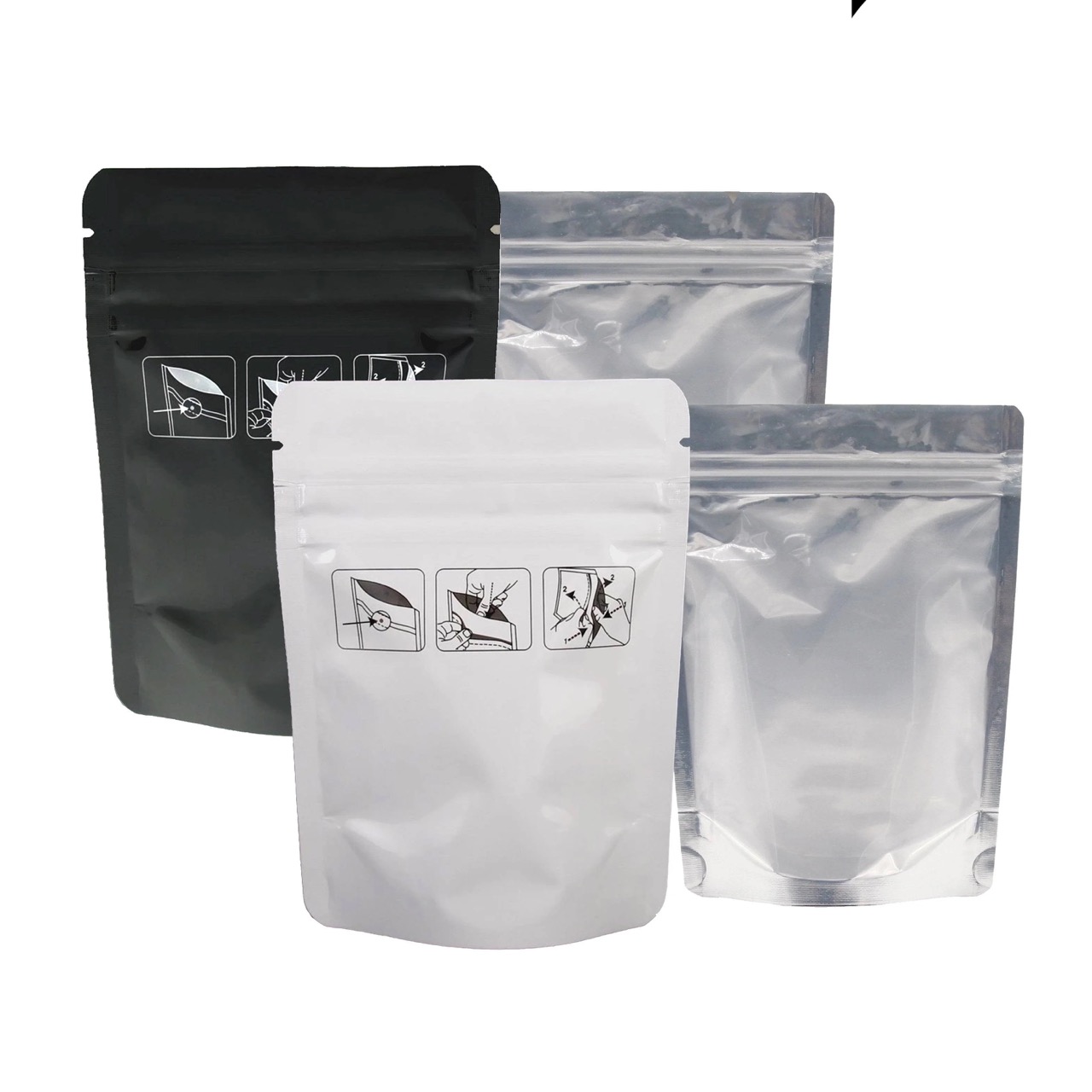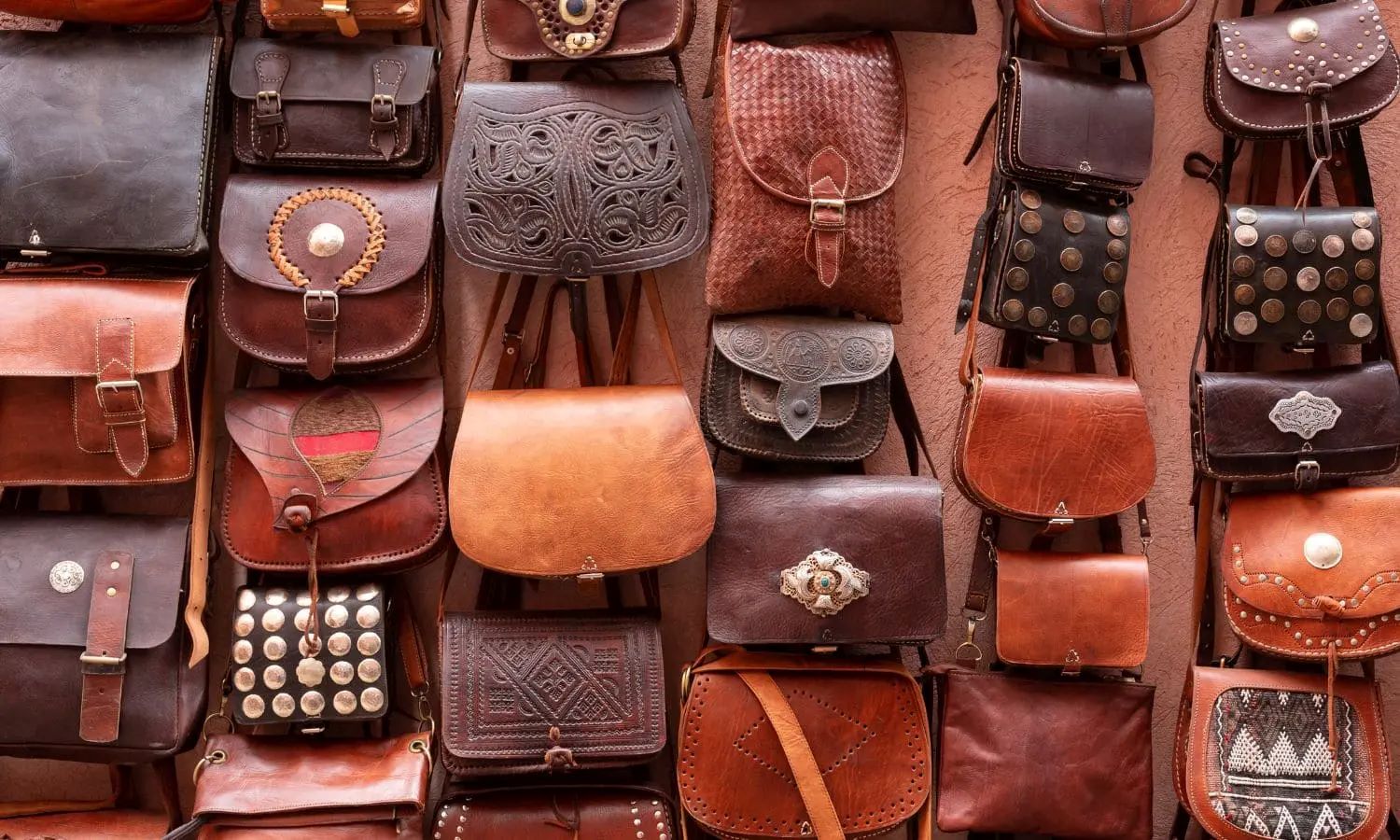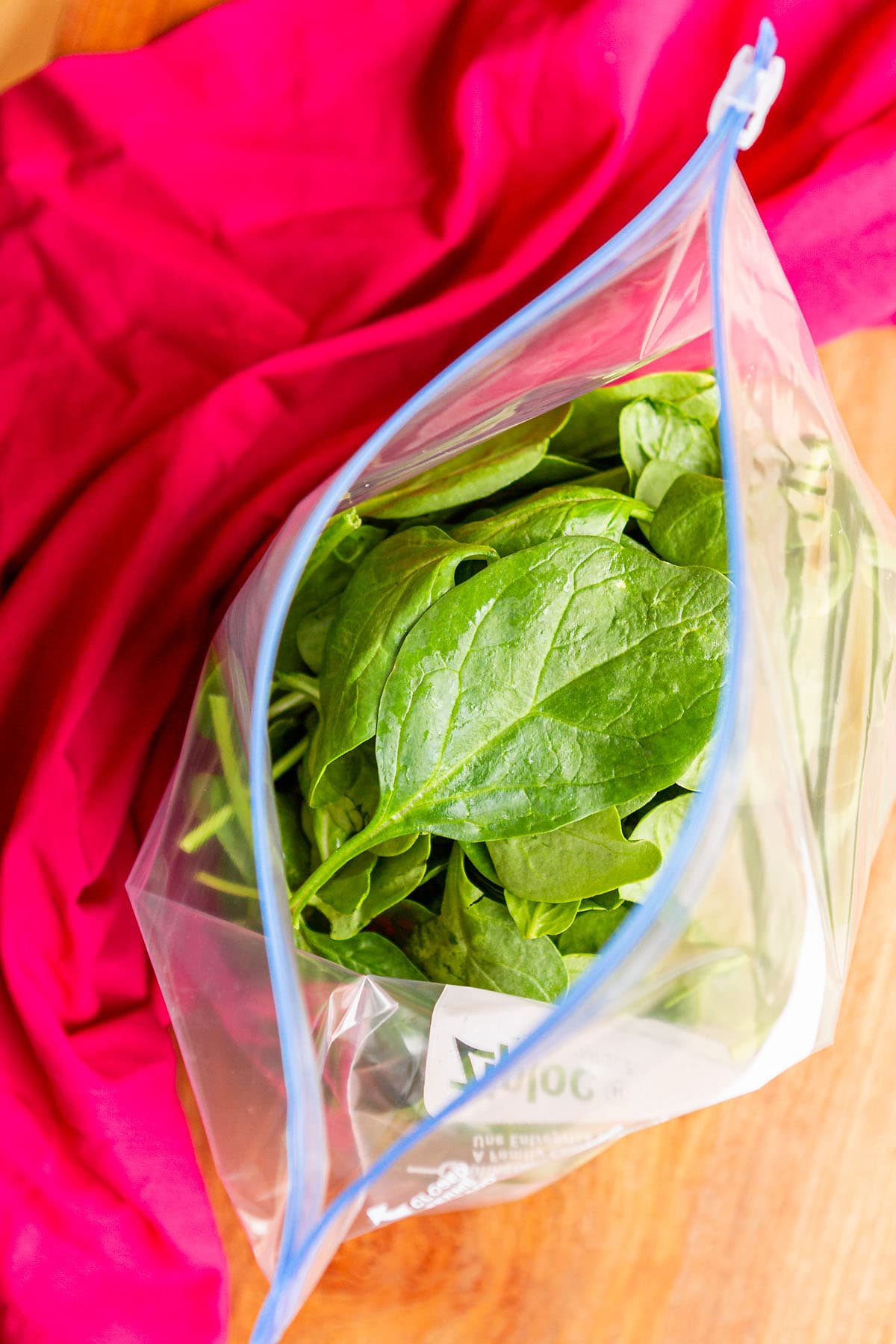

Articles
How To Store Bags
Modified: October 20, 2024
Learn how to store and organize your bags with our helpful articles. Maximize closet space and keep your bags in pristine condition.
(Many of the links in this article redirect to a specific reviewed product. Your purchase of these products through affiliate links helps to generate commission for Storables.com, at no extra cost. Learn more)
Introduction
Welcome to our comprehensive guide on how to properly store bags. Whether you have a collection of designer handbags, functional backpacks, travel bags, or specialized sports bags, proper storage is essential to keep them looking their best and prolong their lifespan.
Many of us invest a significant amount of money in acquiring the perfect bags for various occasions, seasons, or specific purposes. Therefore, it is essential to take care of these valuable items when they are not in use.
In this article, we will explore the benefits of proper bag storage and guide you in selecting the right storage space. We will also cover cleaning and preparing bags for storage, as well as provide specific instructions on how to store different types of bags including handbags, backpacks, travel bags, sports bags, and delicate specialty bags.
By following the tips and recommendations in this guide, you can ensure that your bags remain in excellent condition, free from damage, discoloration, and deformation caused by improper storage.
So, let’s dive in and explore the world of bag storage, and learn how to keep our beloved bags in top-notch condition.
Key Takeaways:
- Properly storing bags preserves their condition, prevents structural damage, and increases longevity. Selecting the right storage space and following cleaning and preparation steps are crucial for maintaining bags in excellent condition.
- Regular inspection, airing out, and careful handling are essential for maintaining stored bags. Following manufacturer’s recommendations and rotating bags for use helps prolong their lifespan and preserve their condition.
Read more: How To Store Garbage Bags
Benefits of Proper Bag Storage
Properly storing your bags has numerous benefits that go beyond just maintaining their appearance. Here are some of the key advantages of implementing good bag storage practices:
- Preserves the Bag’s Condition: When bags are stored properly, they are protected from dust, dirt, and moisture that can cause damage such as staining, discoloration, or mildew growth. This helps to maintain their original condition and overall quality.
- Prevents Structural Damage: Incorrect storage can lead to the deformation of bags, especially those made of delicate materials such as leather or fabric. By providing adequate support and protection during storage, you can prevent misshaping or warping of the bag’s structure.
- Increases Longevity: By protecting your bags from unnecessary wear and tear during storage, you can significantly extend their lifespan. This not only saves you money in the long run but also allows you to enjoy your favorite bags for years to come.
- Saves Space: Proper storage helps maximize space utilization by keeping your bags neatly organized and compactly stored. This is particularly useful if you have a large collection of bags or limited storage space.
- Facilitates Easy Access: Efficient storage methods make it easier to locate and retrieve specific bags when you need them. By organizing your bags and keeping them in good condition, you’ll spend less time searching and more time enjoying your collection.
- Prevents Fading and Sun Damage: Exposure to direct sunlight can cause fading and deterioration of bag materials, especially those with vibrant colors or UV-sensitive fabrics. Proper storage in a cool and dark environment helps shield your bags from harmful UV rays and prevents premature fading.
By understanding the benefits of proper bag storage, you can see the value in devoting a little time and effort to store your bags correctly. Now, let’s move on to the next section and discuss how to select the right storage space for your bags.
Selecting the Right Storage Space
Choosing an appropriate storage space for your bags is crucial to ensure their protection and longevity. Here are some factors to consider when selecting the right storage space:
- Clean and Dry Environment: The storage area should be clean, dry, and free from excessive moisture or humidity. Damp conditions can lead to mold and mildew growth, which can damage your bags.
- Avoid Direct Sunlight: Sunlight can cause discoloration and fading of bag materials. Choose a storage space away from windows or install blinds or curtains to block out direct sunlight.
- Temperature Control: Extreme temperatures can have adverse effects on bag materials. Aim for a storage area with a stable temperature to prevent damage caused by fluctuating heat or cold.
- No Excessive Weight: Avoid placing heavy items on top of your stored bags, as this can cause unnecessary pressure and distortion. Opt for a storage space where you can minimize stacking or crushing of bags.
- Good Ventilation: Adequate air circulation is essential to prevent the buildup of musty odors and moisture. Choose a storage space with proper ventilation or place bags in breathable dust bags or pillowcases.
- Organizational Options: Consider storage solutions such as shelves, racks, hooks, or hangers that allow you to store bags in an organized manner. This will make it easier to access and retrieve specific bags without causing damage to others.
- Security Measures: If your bags hold significant value or sentimental attachment, consider storing them in a locked cabinet, closet, or storage unit to ensure their safety.
It’s important to assess your available storage options and choose the one that best meets these criteria. Additionally, make sure to regularly inspect and clean the storage space to maintain a clean and suitable environment for your bags.
Now that you know how to select the right storage space, let’s move on to the next section and discuss the essential steps for cleaning and preparing your bags before storage.
Cleaning and Preparing Bags for Storage
Before storing your bags, it is essential to clean and prepare them properly to ensure they remain in pristine condition during their time in storage. Here are some steps to follow:
- Empty and Remove Contents: Start by emptying the bag of any personal belongings or items. Remove all items from pockets, compartments, and zipped sections. This prevents the accumulation of debris and ensures that no items are forgotten or left behind.
- Brush or Vacuum: Use a soft brush or a vacuum cleaner with a brush attachment to remove any dust, dirt, or debris from the surface of the bag. Pay attention to seams, corners, and crevices where dirt may accumulate.
- Spot Cleaning: For minor stains or dirt marks, spot clean the affected areas using a gentle cleanser recommended for the specific bag material. Follow the manufacturer’s instructions and test any cleaning products on a small, inconspicuous area first to ensure they do not cause discoloration or damage.
- Conditioning and Polishing: For leather bags, consider using a leather conditioner to keep the material soft and supple. Apply a suitable leather polish or protectant to maintain its luster and prevent cracking or drying out.
- Allow Drying Time: After cleaning, allow the bag to air dry completely before storing. Do not expose it to direct heat sources, as this can cause damage or shrinkage. Ensure the bag is completely dry to avoid the growth of mold or mildew during storage.
- Stuffing and Supporting: For structured bags that may lose their shape during storage, stuff them with acid-free tissue paper or use specialized bag inserts to help maintain their original form. Avoid using newspaper or colored tissue paper, as they can transfer ink or dyes onto the bag’s surface.
- Protective Coverings: Place the bag inside a breathable dust bag, pillowcase, or cotton fabric cover to protect it from dust and light exposure. Avoid using plastic bags or covers, as they can trap moisture and cause damage.
By following these cleaning and preparation steps, you can ensure that your bags are in the best possible condition before entering storage. In the next sections, we will discuss specific instructions for storing different types of bags, including handbags, backpacks, travel bags, and specialty bags.
Let’s proceed to the next section to learn about storing handbags and purses.
Storing Handbags and Purses
Handbags and purses, especially those made of leather or fabric, require special care to maintain their shape and condition. Here are some tips for storing handbags and purses:
- Stuffing: Fill the bags with acid-free tissue paper or use specialized purse inserts to help preserve their shape. This prevents them from losing their form and developing creases or wrinkles during storage.
- Handles and Straps: Avoid hanging bags by their handles, as this can cause stress on the straps and lead to stretching or distortion. Instead, lay them flat on a shelf or use individual purse stands to support the bags.
- Separate Storage: Store each handbag or purse separately to prevent color transfer or scratching. Use shelf dividers or individual cubbies to keep them organized and protected from contact with other bags.
- Purse Pillows: Consider using purse pillows or acid-free foam inserts to help maintain the bag’s shape when storing small and delicate clutches or evening bags.
- Regular Rotation: To prevent the straps or handles from becoming misshapen, rotate the bags regularly by switching them out every few months. This ensures even distribution of weight and prevents strain on specific parts of the bag.
Remember to avoid storing handbags and purses in areas with high humidity or excessive heat. Opt for a cool and dry storage space to prevent damage to the materials.
For optimal organization, you can also label each bag with tags indicating the brand, style, or color to easily locate them when needed.
Now that you know how to store handbags and purses, let’s move on to discussing the proper storage methods for backpacks and messenger bags.
Read more: How To Store Gift Bags
Storing Backpacks and Messenger Bags
Backpacks and messenger bags are versatile and functional, often used for daily activities or outdoor adventures. To ensure they remain in top condition and ready for your next adventure, follow these storage guidelines:
- Clean and Dry: Before storing, make sure your backpack or messenger bag is thoroughly cleaned and completely dry. Remove any dirt, debris, or stains using a suitable cleanser or spot cleaner for the specific material.
- Empty and Organize: Empty all pockets and compartments, removing any loose items or debris. Sort and organize the contents to avoid unnecessary weight or pressure on the bag during storage.
- Fold or Lay Flat: If possible, fold your backpack or messenger bag neatly to maximize storage space. Alternatively, you can lay them flat on a shelf or in a storage container.
- Protective Covers: Consider using a breathable dust bag or a cotton fabric cover to protect your backpack or messenger bag from dust and light exposure. This will help maintain its appearance and prevent damage to the material.
- Keep Straps Secure: Ensure that straps and buckles are securely fastened or tucked away to prevent them from getting caught or damaged during storage.
- Avoid Overstuffing: While it may be tempting to stuff your backpack or messenger bag to maximize space, it’s important to avoid overfilling them. This can lead to stretching, tearing, or damaging the seams and zippers.
- Hang or Stack: If you have limited shelf space, you can hang your backpack or messenger bag using hooks or place them in clear plastic bins for easy access and visibility.
- Regular Maintenance: Periodically check your stored backpack or messenger bag for any signs of damage, mold, or pests. If you notice any issues, take appropriate measures to address them promptly.
By following these storage tips, you can keep your backpacks and messenger bags in good condition and ready for your next adventure.
In the next section, we will discuss how to properly store travel and luggage bags.
Store bags in a cool, dry place away from direct sunlight to prevent fading and damage. Stuff them with tissue paper to help them keep their shape, and avoid hanging heavy bags to prevent stretching.
Storing Travel and Luggage Bags
Travel and luggage bags are designed to withstand the rigors of traveling, but proper storage is essential to ensure their longevity and functionality. Here’s how to store them correctly:
- Clean and Dry: Wipe down the exterior of the bag with a damp cloth to remove any dirt or stains. Ensure that the bag is completely dry before storing to prevent the growth of mold or mildew.
- Empty and Organize: Empty all compartments and pockets, removing any items such as travel-size toiletries, clothing, or documents. Fold and organize any detachable parts or accessories separately.
- Collapsible Options: If your travel or luggage bag is collapsible, take advantage of this feature to save on storage space. Follow the manufacturer’s instructions to fold and collapse the bag properly.
- Supportive Structure: If your travel or luggage bag has a rigid structure or hard shell, store it in an upright position to maintain its form and prevent distortion.
- Protective Covers: Consider using a dust bag or fabric cover to protect your travel or luggage bag from dust, sunlight, and potential scratches. This will help preserve its appearance during storage.
- Avoid Stacking Heavy Items: When storing multiple travel or luggage bags, avoid stacking heavy items on top of each other. This can cause damage to the bags beneath and potentially deform them.
- Secure Fastenings and Zippers: Ensure that all fastenings, zippers, and locks are securely closed to prevent any accidental opening or damage during storage.
- Appropriate Storage Space: Choose a storage area that provides enough space for your travel or luggage bags to avoid them being crammed or squeezed together. Consider using shelf dividers or individual storage cubbies.
- Periodic Maintenance: Regularly check your stored travel or luggage bags for any signs of moisture, pests, or damage. If necessary, address these issues promptly to prevent further deterioration.
By following these storage guidelines, your travel and luggage bags will remain in excellent condition and ready to accompany you on your next adventure.
Now, let’s move on to discussing how to properly store sports and fitness bags.
Storing Sports and Fitness Bags
Sports and fitness bags are designed to carry workout gear, equipment, and accessories. To keep them in optimal condition and ready for your next exercise session, follow these tips for storing sports and fitness bags:
- Clean and Dry: Before storing, make sure your sports and fitness bag is clean and completely dry. Empty any compartments and pockets, and remove any damp or sweaty items to prevent odors and mold.
- Washable Liners: If your bag has a removable liner or laundry bag, take it out and wash it separately according to the manufacturer’s instructions. Allow the liner to dry completely before placing it back into the bag.
- Separate Smelly Items: If you have any smelly items such as dirty gym clothes or sports shoes, store them in separate breathable bags within your sports bag to prevent odors from transferring to other items.
- Air Out: After each use, allow your sports bag to air out by leaving it open or unzipped in a well-ventilated area. This helps prevent the growth of bacteria and unpleasant odors.
- Use Hooks or Hangers: If your sports bag has a built-in hook or loop, hang it on a hook or hanger to allow it to air out and maintain its shape. This also keeps it off the floor, reducing the risk of dirt or moisture buildup.
- Store in a Dry Area: Choose a storage space that is dry and well-ventilated to prevent mildew or mold growth. Avoid storing your sports bag in humid or damp areas, such as basements or garages.
- Keep Sports Equipment Separate: If your sports bag includes equipment such as tennis rackets or golf clubs, consider storing them separately in their designated cases or covers to protect them from damage.
- Regular Cleaning: Periodically clean your sports bag according to the manufacturer’s instructions. This helps remove any dirt, sweat, or odors that may have accumulated over time.
- Inspect and Repair: Before storing your sports bag, inspect it for any signs of wear and tear, such as broken zippers or loose seams. Repair or replace any damaged parts to ensure the bag remains functional for future use.
By following these storage tips, you can keep your sports and fitness bags fresh, clean, and ready for your next workout or sports activity.
Next, let’s move on to discussing how to store specialty and delicate bags properly.
Storing Specialty and Delicate Bags
Specialty and delicate bags require extra care and attention when it comes to storage. Whether you have a designer clutch, a vintage handbag, or a delicate beaded evening bag, here are some tips for storing specialty and delicate bags:
- Clean and Condition: Clean the bag thoroughly using a gentle cleanser appropriate for the specific material. Follow the manufacturer’s instructions or consult a professional cleaner for delicate materials. Condition leather bags to keep them hydrated and prevent drying out.
- Avoid Overstuffing: Avoid overstuffing specialty and delicate bags to maintain their shape. Use acid-free tissue paper to stuff the bags gently and help them retain their form. Avoid using colored tissue paper that may transfer dye onto the bag.
- Separate Storage: Store each specialty and delicate bag separately in a dust bag or pillowcase to protect it from dust, light, and potential scratches. Avoid storing them in plastic bags, as they can trap moisture and cause damage.
- Keep Handles Protected: Preserve delicate handles by wrapping them in acid-free tissue paper or using soft fabric padding to avoid any dents or creases. This is especially important for bags with fragile materials such as silk or beaded handles.
- Store in a Cool, Dark Place: Specialty and delicate bags are sensitive to sunlight and changes in temperature. Store them in a cool, dark place to prevent fading, discoloration, or warping of the materials.
- Regularly Check for Damage: Periodically inspect your stored specialty and delicate bags for any signs of damage, such as loose threads, missing embellishments, or weakened straps. Address any issues promptly to prevent further deterioration.
- Avoid Hanging: It is best to store specialty and delicate bags flat or upright, rather than hanging them. Hanging can cause stress on delicate straps or handles and lead to stretching or distortion over time.
- Climate Control: If you live in an area with high humidity or extreme temperatures, consider using a dehumidifier or moisture-absorbing packets in the storage area to protect your specialty and delicate bags from moisture damage.
- Rotate Bags: Periodically rotate the bags in storage to ensure equal exposure to air and prevent any flat spots or deformations from long-term storage in the same position.
By following these storage tips, you can keep your specialty and delicate bags in excellent condition and preserve their beauty and value for years to come.
Now that we have covered the storage tips for various types of bags, let’s move on to some general tips for maintaining your stored bags.
Read more: How To Store Plastic Bags
Tips for Maintaining Stored Bags
Maintaining stored bags properly is crucial to ensure their longevity and preserve their condition. Here are some essential tips for maintaining stored bags:
- Regular Inspection: Periodically check your stored bags for any signs of damage, mold, or pests. Etremelyfabric bags are especially susceptible to moth damage. Early detection allows for prompt action to prevent further deterioration.
- Airing Out: Take your stored bags out of storage and air them out occasionally to refresh them and prevent any musty odors. Leave them open in a well-ventilated area for a few hours before returning them to storage.
- Temperature and Humidity Control: Maintain a stable and moderate temperature in the storage area to prevent extreme heat or cold from damaging the bags. Additionally, control humidity levels to avoid excessive moisture, which can lead to mold or mildew growth.
- Regular Cleaning: Even in storage, bags can accumulate dust or dirt. Clean them periodically by gently wiping or brushing the surface. Avoid using harsh chemicals or aggressive cleaning methods that may damage the bag’s material.
- Handle with Care: When taking bags out of storage or rearranging them, handle them with clean hands and be gentle to avoid any unnecessary strain or accidental damage.
- Rotate and Use: Keep your bags in regular rotation by switching them up every few months. This helps prevent long-term compression or deformation of stored bags, and also allows you to enjoy and use different bags from your collection.
- Avoid Moisture and Sunlight: Protect your stored bags from direct sunlight and excessive moisture, as they can cause fading, discoloration, and material deterioration. Choose a storage area that shields the bags from these elements.
- Keep Storage Area Clean: Regularly clean and maintain the storage area to prevent dust, dirt, or pests from affecting your stored bags. Vacuum or wipe the shelves, and use pest control measures if necessary.
- Label and Document: Label your storage containers or shelves to easily identify the contents and locate specific bags. You can also keep a record or inventory of your stored bags for reference and tracking purposes.
- Follow Manufacturer’s Recommendations: Always refer to the manufacturer’s care instructions for specific bags, as different materials and designs may require unique maintenance approaches. This ensures that you are taking the best care of your bags and prolonging their lifespan.
By implementing these tips, you can maintain the condition of your stored bags and ensure they remain in excellent shape for future use. It’s time to give your bags the care they deserve.
Now, let’s conclude our comprehensive guide on how to store bags properly.
Conclusion
In conclusion, properly storing your bags is essential for maintaining their appearance, condition, and longevity. By following the tips and guidelines outlined in this comprehensive guide, you can ensure that your bags remain in excellent shape and ready for use when needed.
We explored the benefits of proper bag storage, such as preserving the bag’s condition, preventing structural damage, increasing longevity, saving space, and facilitating easy access. Additionally, we discussed the importance of selecting the right storage space, considering factors such as cleanliness, temperature control, and ventilation.
Cleaning and preparing bags for storage is crucial to prevent dirt, stains, and moisture from causing damage. We provided step-by-step instructions on how to clean different types of bags and prepare them for storage, including emptying contents, spot cleaning, conditioning, and allowing for proper drying time.
We also covered specific storage techniques for various types of bags, including handbags and purses, backpacks and messenger bags, travel and luggage bags, sports and fitness bags, and specialty and delicate bags. Each type of bag requires unique considerations and precautions to maintain their shape, protect delicate materials, and prevent damage.
Finally, we discussed valuable tips for maintaining stored bags, such as regular inspection, airing out, temperature and humidity control, regular cleaning, careful handling, rotation and use, and protection from moisture and sunlight.
Remember, investing time and effort in proper bag storage is well worth it. By following these guidelines, you can ensure that your bags remain in excellent condition, prolong their lifespan, and continue to bring you joy and functionality for years to come.
Thank you for joining us on this journey into the world of bag storage. Now it’s time to put these tips into action and give your precious bags the care they deserve!
Frequently Asked Questions about How To Store Bags
Was this page helpful?
At Storables.com, we guarantee accurate and reliable information. Our content, validated by Expert Board Contributors, is crafted following stringent Editorial Policies. We're committed to providing you with well-researched, expert-backed insights for all your informational needs.














0 thoughts on “How To Store Bags”